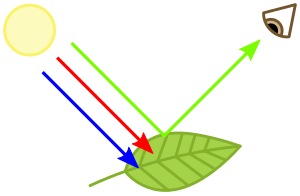**Chlorophyll Basics:**
– Responsible for the green color in plants and algae
– Found in chloroplasts and absorbs blue and red light
– Enables plants to absorb energy from light
– Several types of chlorophyll with a common magnesium ligand
– Vital for photosynthesis in plants
**Chlorophyll Chemistry:**
– Derivatives of chlorin with a fifth ring
– Classified as chlorins, relatives of porphyrins
– Different forms like chlorophyll a and b
– Binds magnesium instead of iron
– Deep green solutions in organic solvents
**Chlorophyll Function and Biosynthesis:**
– Arranged in photosystems in chloroplasts for photosynthesis
– Two main photosystems: I (P700) and II (P680)
– Biosynthesis involves a pathway shared with heme and siroheme
– Chlorophyll synthase completes chlorophyll biosynthesis
– Senescence involves chlorophyll degradation and recycling
**Chlorophyll Applications and Analysis:**
– Used as a food additive colorant and in culinary applications
– Synthetic chlorophyll for coloring foods and beverages
– Monitoring chlorophyll concentrations in plants and seawater
– Various chlorophyll variants discovered for different applications
– Methods for accurate chlorophyll assays and monitoring
**Recent Advances in Chlorophyll Research:**
– Studies on chlorophyll structure, synthesis, and variants
– Research on chlorophyll biosynthesis pathways and breakdown
– Insights into chlorophyll degradation and antioxidant properties
– Effects of light and oxygen on chlorophyll biosynthesis
– Role of active oxygen species in plant behavior and degradation of light-harvesting proteins
Chlorophyll is any of several related green pigments found in cyanobacteria and in the chloroplasts of algae and plants. Its name is derived from the Greek words χλωρός, khloros ("pale green") and φύλλον, phyllon ("leaf"). Chlorophyll allow plants to absorb energy from light.
Chlorophylls absorb light most strongly in the blue portion of the electromagnetic spectrum as well as the red portion. Conversely, it is a poor absorber of green and near-green portions of the spectrum. Hence chlorophyll-containing tissues appear green because green light, diffusively reflected by structures like cell walls, is less absorbed. Two types of chlorophyll exist in the photosystems of green plants: chlorophyll a and b.




